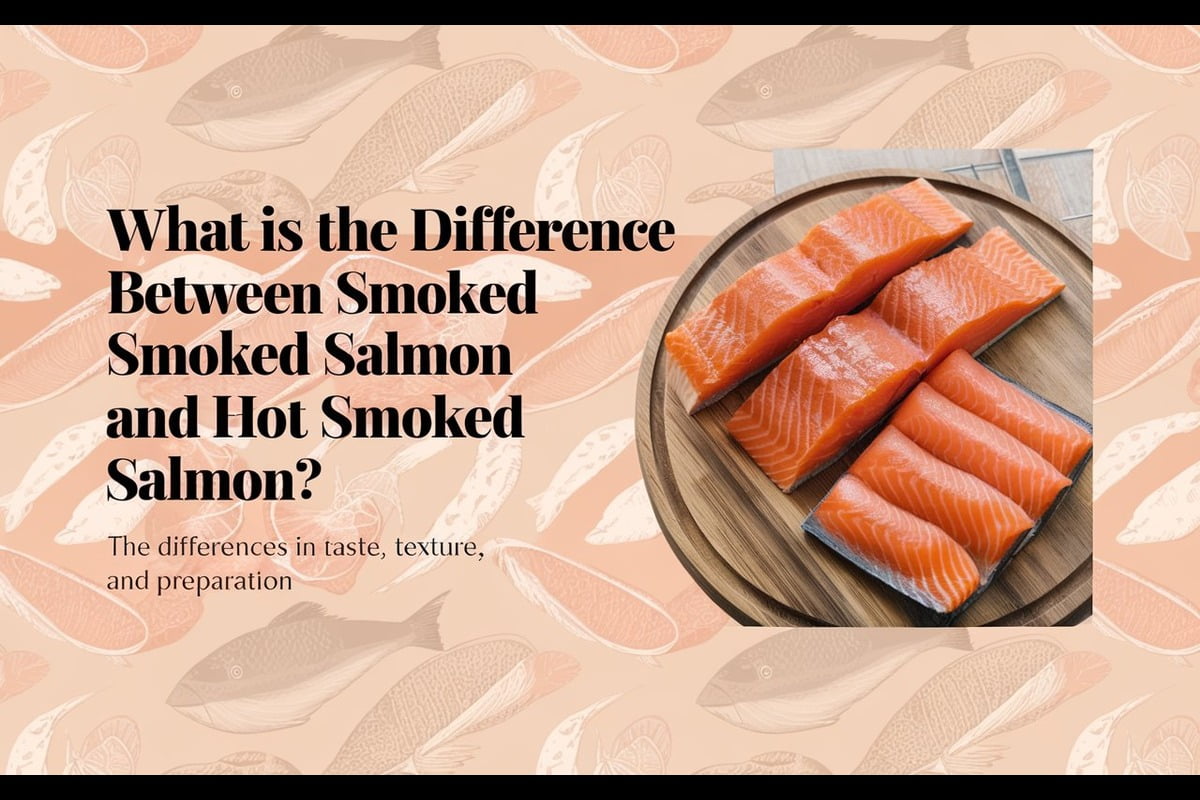Introduction
What is the difference between them?
Smoked salmon is a favorite across the globe, but not all smoked salmon is created equal. Two prominent varieties dominate the market. For many, choosing between these two can feel confusing. However, the differences between these styles significantly impact their texture, flavor, and versatility in recipes.
In this article, you’ll discover the distinct characteristics of cold-smoked and hot-smoked salmon, helping you make an informed choice for your next culinary adventure. By understanding the unique qualities of each, you can confidently select the perfect option for your dish.
Main Answer
What Is the Difference Between Cold-Smoked and Hot-Smoked Salmon?
The primary difference between the two lies in how they’re processed. Cold-smoked salmon undergoes smoking at temperatures below 90°F (32°C), resulting in a smooth, silky texture that resembles raw fish. It is cured with salt, which preserves it but does not cook the fish. Because of this gentle process, cold-smoked salmon retains a mild, delicate smoky flavor, making it ideal for serving cold, such as on bagels or in salads(
On the other hand, hot-smoked salmon is cooked at higher temperatures, typically between 120°F and 180°F (49°C to 82°C). This method fully cooks the fish, giving it a firm, flaky texture. As a result, has a deeper, bolder smoky flavor, which makes it versatile enough to enjoy in both cold and hot dishes like pastas, quiches, or omelets(
Key Points:
- Cold-Smoked Salmon:
- Smooth, silky texture.
- Mild, subtle smoky flavor.
- Best served cold, usually on bagels or with salads.
- Hot-Smoked Salmon:
- Firm, flaky texture.
- Stronger smoky flavor.
- Perfect for both cold dishes and heated recipes.
If you want to explore more on safe smoking techniques, consider reading this smoking safety guide for comprehensive information.
Supporting Information
Frequently Asked Questions and Common Misconceptions:
- Is cold-smoked salmon raw? Although it looks raw, cold-smoked salmon is safe to eat due to its curing process. The fish is salted, which prevents harmful bacteria from developing.
- How long does each type last? is fully cooked, it typically lasts longer than cold-smoked salmon. You can keep in the refrigerator for about a week, while should be consumed within a few days
Practical Uses for Smoked Salmon:
- Cold-Smoked Salmon works well in:
- Salads: Thinly slice and toss into a light salad with capers and lemon.
- Bagels: The classic pairing with cream cheese and dill remains unbeatable.
- Appetizers: Roll with cream cheese and serve on crackers for a quick, easy starter.
- Hot-Smoked Salmon is great for:
- Pastas: Flake it into creamy pasta for an added smoky twist.
- Egg Dishes: Stir it into scrambled eggs or frittatas for breakfast.
- Quiches: Add to a rich quiche for a flavorful main course.
In-Depth Insights
Why This Difference Matters
Choosing between cold-smoked and hot-smoked salmon isn’t just a matter of personal preference. It also reflects cultural and regional culinary traditions. Cold-smoking is common in the Nordic regions and on the East Coast of the U.S., where the light, raw-like texture is preferred(
Both types of salmon are also excellent sources of omega-3 fatty acids, which play a vital role in maintaining heart health. However, while the cold smoking process preserves these oils almost entirely, hot smoking reduces some of the delicate fats due to the higher cooking temperature(
Alternative Perspectives
- Cold-Smoked Salmon is perfect for those who love a delicate, raw texture. It’s the go-to choice for sushi lovers or anyone looking for a light, subtle dish.
- Hot-Smoked Salmon, however, shines in its versatility. Since it’s fully cooked, you can easily incorporate it into various dishes without worrying about altering its texture(Smokedbyewe).
Examples or Case Studies
Cold-Smoked Salmon in Action
Imagine preparing a brunch with thin slices of cold-smoked salmon, served with bagels, capers, and dill. Its smooth texture and subtle smoky flavor complement the tangy cream cheese beautifully. In Nordic countries, cold-smoked salmon plays a vital role in traditional family gatherings and celebrations(
Hot-Smoked Salmon in Action
paired with herbs and creamy eggs. Its firm, smoky texture adds depth to the dish, making it a favorite in rustic meals across the Pacific Northwest. You can also serve it alongside mustard or horseradish sauce for added flavor(
Conclusion
In the end, the choice between cold depends largely on how you plan to use it. Cold-smoked salmon works best in delicate, raw-like preparations, while offers versatility with its firm texture and . Whether you’re looking to add a light touch to your appetizers or a smoky punch to a hot dish, both types of salmon bring something special to the table.
Armed with this knowledge, you can confidently select the right salmon for your next meal. Which will you choose: the melt-in-your-mouth cold-smoked or the robust, flavorful? No matter your choice, you’re in for a treat.
FAQs
- Can you freeze smoked salmon? Yes, both cold-smoked and hot-smoked salmon freeze well for up to three months. Be sure to wrap it tightly to prevent freezer burn.
- Which is healthier: cold-smoked or hot-smoked salmon? Both types of salmon are rich in omega-3 fatty acids. However, cold-smoked salmon retains more of these beneficial oils because it isn’t fully cooked, while hot-smoked salmon loses some during the smoking process(Solex Catsmo)(Smokedbyewe).
- Can cold-smoked salmon be cooked? Cold-smoked salmon is best enjoyed cold. Cooking it would significantly alter its delicate texture.

